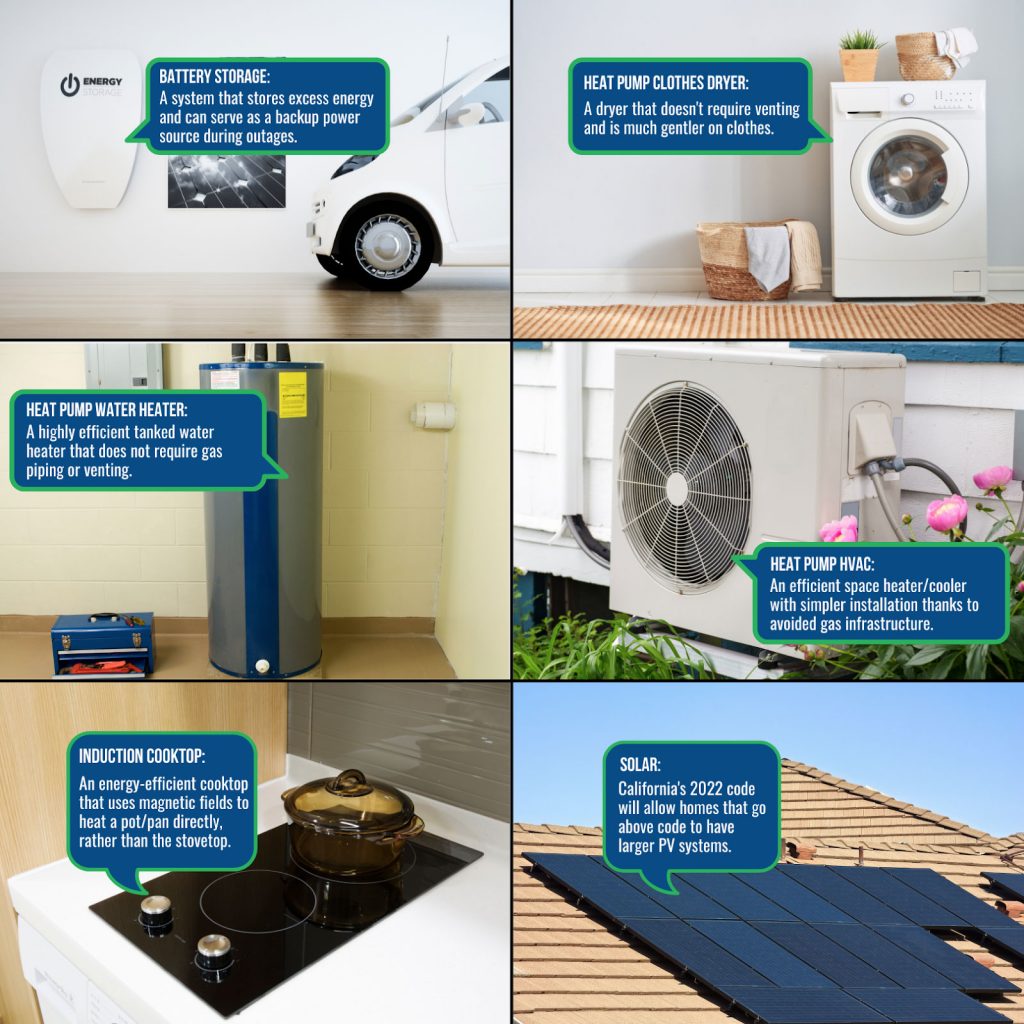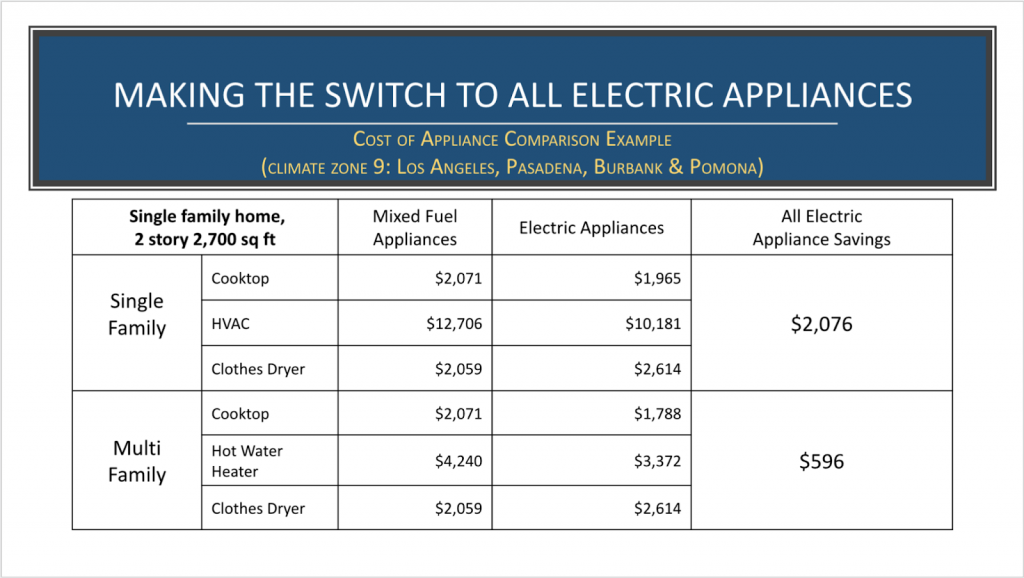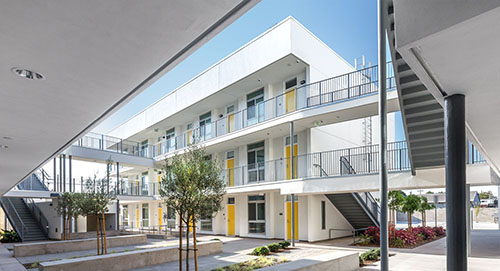© builditgreen.org 2024 | All Rights Reserved | Site by JoomDev
ConSol, an energy consulting firm, recently joined us for a live webinar to discuss the benefits of electrification in the context of the 2022 Energy Code. They shared their research findings to help attendees—mostly homeowners and building professionals—understand misconceptions and hesitations commonly associated with going all-electric.
California’s goal of carbon neutrality by 2045 will only be achieved by embracing electrification for new and existing buildings. The 2019 building code already mandates solar panels for new construction and offers compliance benefits for installing electric appliances; pro-decarbonization changes like these will only continue in the 2022 cycle. In addition to introducing a source energy component that acts as a proxy for carbon, the upcoming cycle is slated to make it nearly impossible to comply with gas appliances. These updates will push the state toward its target by further encouraging renewable energy generation and electrification.
On Thursday, June 24th, experts from energy consulting firm ConSol joined us to discuss the implications of electrification under the 2022 code. A mix of city building officials, non-profit advocates, homeowners, and building professionals that design, build, live in, and sell homes tuned in for the event; approximately half shared that they already work with all-electric homes in some capacity, but still had questions about emerging technologies and where to find resources.
The key speakers for the event were Amy Valine and Dr. Will Allen, Research Analyst and Senior Technical Consultant at ConSol, respectively. In this event recap, we’ll walk through the main points of each section from their presentation, and share some helpful resources at the end. If you weren’t able to make it, you can watch the recording on our YouTube channel HERE and check out the slideshow HERE.
Perhaps unexpectedly, one of the biggest barriers to going all-electric is moving past the misconceptions surrounding key electric appliances. With heat pump water heaters, for example, homeowners have grown used to tankless systems; switching to a tanked appliance could make them feel like the amount of hot water they have is limited, even though that’s not the case.
Induction cook stoves also have a bad reputation compared to their gas counterparts. People—especially those who love cooking—are accustomed to the open flame, heat-up speed, and temperature control associated with gas cooking, and skeptical of the improvements that have been made to induction cooktops as a result. Not only are they safer than gas stoves, but they also have higher efficiency and result in better indoor air quality.
Check out this infographic to learn more about the key appliances involved in an all-electric transition:

With the exception of battery storage and rooftop solar, everything depicted above has a negligible price difference compared to its gas counterpart (plus installation savings due to avoiding gas hookups). Additionally, the increased efficiency of these appliances offers major compliance benefits—especially under the 2022 code.
Though investing in battery storage can be expensive, installing a system in a newly constructed home will lower building efficiency requirements and allow homeowners to reduce the size of their PV system by up to 25%. There are also major positive implications for resilience, giving homeowners the ability to rely on stored energy during extreme weather events and power outages. The cost-savings ratio is high because the market is fairly new—savings are only $101/year for a $13,000 7.5 kWh battery—but this is expected to go down as the product is further developed.
In the context of new construction, all-electric homes are actually cheaper to build than their mixed fuel counterparts. A study by Energy and Environmental Economics (E3) found that there are appliance cost savings of over $2000 per single family home and around $600 per multifamily building. There are also infrastructure savings associated with not having to run gas lines to the home. According to ConSol’s analysis of new subdivisions in California, this number is in the $1500 range, but can largely vary depending on building type and location.

With reduced construction costs, builders will see an increased profit per home. Passing the savings onto the customer at a lower price also creates potential for increased home sales. But perhaps most importantly, using electric appliances gives the gift of flexibility—by increasing a building’s compliance margin, tradeoffs become viable in other parts of the home.
It’s important to remember that pursuing an all-electric building is worthwhile for more than just the builder; electrifying a home or unit also has tangible benefits for the homeowner or renter. Here are just a few examples of these impacts:
Amy shared a few examples of newly constructed, all-electric neighborhoods in the SCE service area, as well as the simplicity of their appliances, to demonstrate how feasible electrification projects can be.
The first she showed was the CitySquare project in Irvine—a Zero Net Energy townhome community, and the first of its kind in Southern California. Completed in late 2019, it consists of six buildings and 44 townhomes, and achieved HERS scores of 11-17. The units have 100% LED lighting, smart appliances, rooftop solar, and heat pump appliances, but nothing particularly fancy or unique.

The exterior of the Silver Star Apartments, a complex built to provide affordable housing to veterans—especially those who are homeless—and their families.
The Silver Star Apartments in Los Angeles, built back in 2017, are another example of a project that was able to earn certifications—LEED Platinum and ENERGY STAR—with fairly standard appliances. The complex is actually LA’s first Zero Net Energy multifamily affordable housing project, and serves as a housing community for homeless and disabled veterans in particular. The apartments have rooftop solar with onsite battery storage and solar water heating, and each unit is equipped with a ductless mini-split heat pump.
These examples, in addition to the third project spotlight—Atwood in Covina—are proof that achieving certifications or all-electric appliances can be a practical pursuit for any project.
If you’re interested in electrifying your appliances, rebate programs are good places to start. SCE, Pacific Gas & Electric (PG&E), and SoCal Gas have a variety of rebates and incentives available for all of their customers, including renters—and they’re not the only ones.
Switchison.org is one website with an online rebate directory; just by entering your zip code, you can quickly find the available rebates in your area. The BayREN Home+ program takes it one step further by connecting you with a qualified building professional.
If you’re interested in battery storage specifically, check out PG&E’s Self-Generation Incentive Program (SGIP) for residential customers. The rebate currently covers up to 20% of the battery cost, which drives down the high cost-savings ratio and makes it a little bit easier to get this huge boost to home resiliency. (For information on additional rebate and incentive programs, take a look at the last section of our recent blog post, “The Business Case for Electrification”.)
Lastly, lending programs: you may be interested in improving your home’s indoor air quality, but skeptical of getting rid of your gas range. Luckily, many cities and organizations in California will allow you to try out an induction cook stove for free. SCE has its own table top induction range lending program through its Foodservice Technology Center, the San Diego Green Building Council has an Electric Home Cooktop Program, and the City of San Jose and East Bay Community Energy have free cooktop checkouts as well. (And if there are no lending programs in your area, Costco sells plug-in countertop units in the $100 price range.)
If you have any feedback on this event or questions about electrification under the 2022 code, feel free to email us using [email protected]. You can also reach out to our speakers using the following emails:
Amy Valine – [email protected]
William Allen – [email protected]
Build It Green connects changemakers to transform the housing system in service of human and ecological vitality.
1 (510) 590-3360
Mon – Fri, 9am-5pm
[email protected]
© builditgreen.org 2024 | All Rights Reserved | Site by JoomDev